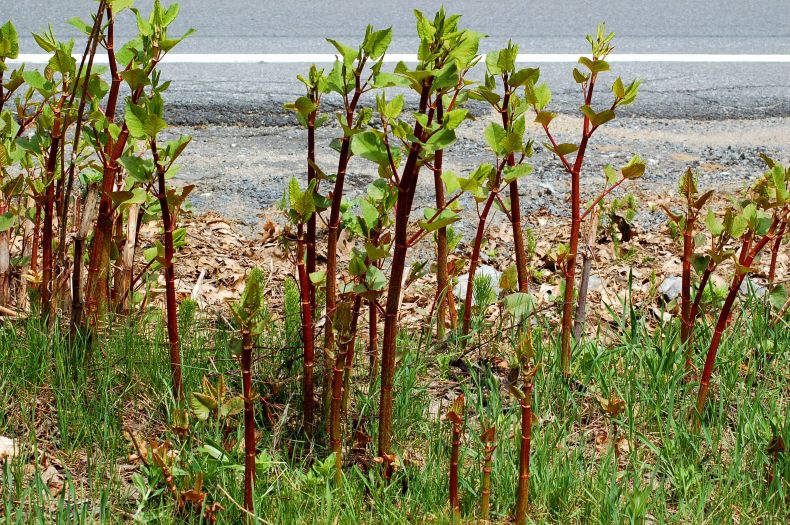As a homeowner, maintaining the beauty and integrity of your property is a top priority. However, there are invasive plants out there that can threaten the health of your garden and even your home’s structural integrity. One such plant that has gained notoriety in recent years is Japanese Knotweed (Fallopia japonica). In this homeowner’s guide, we will explore everything you need to know about Japanese Knotweed identification and taking action to manage this invasive species.

What is Japanese Knotweed?
Japanese Knotweed is a highly invasive and aggressive plant species that originated in East Asia. It was introduced to Europe and North America as an ornamental plant in the 19th century but has since become a widespread nuisance. This plant is notorious for its rapid growth, dense thickets, and tenacious root system.
Identifying Japanese Knotweed
Before you can effectively deal with Japanese Knotweed, you must first be able to identify it correctly. Here are some key characteristics to look for when trying to spot Japanese Knotweed:
1. Appearance
Japanese Knotweed is a perennial herbaceous plant that can grow up to 10 feet tall. It has bamboo-like stems that are green with purple speckles and a hollow interior. The leaves are alternate, broadly oval or heart-shaped, and have a pointed tip. They are typically 3-6 inches long and 2-4 inches wide. The leaves are arranged in a zigzag pattern along the stem.
2. Growth Pattern
One of the most distinctive features of Japanese Knotweed is its growth pattern. It spreads rapidly through underground rhizomes, forming dense thickets. In the spring, it emerges as reddish-purple shoots that quickly grow into tall, bamboo-like stems. The plant produces clusters of small, greenish-white flowers in late summer, which can be followed by small, winged fruits.
3. Autumn Color
In the fall, Japanese Knotweed’s leaves turn a bright yellow before dropping. This change in colour can help differentiate it from other plants in your garden.
4. Size and Habitat
Japanese Knotweed can grow in a wide range of soil types and can be found in various habitats, including riverbanks, roadsides, and gardens. It’s essential to be vigilant, as it can quickly take over an area, displacing native vegetation.
5. Cut Stems
If you cut a stem of Japanese Knotweed, you’ll notice that it has a distinctive hollow centre. The stem is also quite resilient, making it challenging to break.
6. Rhizomes
The rhizomes of Japanese Knotweed are a crucial part of its survival strategy. They are underground stems that can extend several meters from the main plant. These rhizomes can penetrate foundations, drains, and other structures, causing significant damage over time.

Why Should You Be Concerned?
Identifying Japanese Knotweed is just the first step in understanding why it’s essential to manage this invasive species. Here are some reasons why homeowners should be concerned about its presence:
- Aggressive Growth: Japanese Knotweed can grow up to 3 feet in a month, quickly dominating an area and outcompeting native plants.
- Structural Damage: The plant’s strong and extensive root system can penetrate foundations, driveways, and other structures, leading to costly damage. If they are not maintained properly they can overgrow and damage buildings structures.
- Property Value: The presence of Japanese Knotweed can negatively impact your property’s value, making it challenging to sell or refinance.
- Ecological Impact: This invasive species can disrupt local ecosystems by crowding out native plants, reducing biodiversity, and altering habitat structures.
- Legal Implications: In some areas, there are legal requirements to control or eradicate Japanese Knotweed on your property to prevent its spread to neighbouring areas.

What to Do if You Suspect Japanese Knotweed
If you suspect that you have Japanese Knotweed on your property, it’s crucial to take action promptly. Here are the steps you should follow:
- Confirm the Identification: While the characteristics mentioned above can help you identify Japanese Knotweed, it’s always a good idea to consult with a local horticulturist or invasive species expert to confirm the identification.
- Document and Photograph: Take clear photographs of the plant and its location. Documentation will be useful if you need to involve professionals or local authorities.
- Contact Local Authorities: In some regions, Japanese Knotweed is considered a regulated or noxious weed, and there may be legal requirements for its management. Contact your local agricultural extension office or environmental agency to learn about regulations in your area.
- Consider Professional Help: Controlling Japanese Knotweed can be challenging, especially if it has spread extensively. In such cases, it’s often best to consult with professionals who specialize in invasive species management. They can provide guidance on the most effective control methods. This is important as it is a difficult plant to deal with so it’s best to hire a professional to make sure it is taken away fully.
- Control Methods: There are several methods for controlling Japanese Knotweed, including chemical treatments, mechanical removal, and smothering with tarps or landscape fabric. The best approach will depend on the extent of the infestation and your specific circumstances.
- Regular Monitoring: Even after initial control efforts, it’s essential to monitor your property for any regrowth of Japanese Knotweed. This plant can be persistent, so ongoing vigilance is key.
Identifying and managing Japanese Knotweed is crucial for homeowners to protect their property, local ecosystems, and property values. Early detection and prompt action are essential when dealing with this invasive species. If you suspect you have Japanese Knotweed on your property, don’t hesitate to seek professional guidance and take the necessary steps to control its spread. By doing so, you can help preserve the beauty and integrity of your home and garden while contributing to the conservation of native plant species in your area.





[…] RELATED: The Homeowner’s Guide to Identifying Japanese Knotweed […]